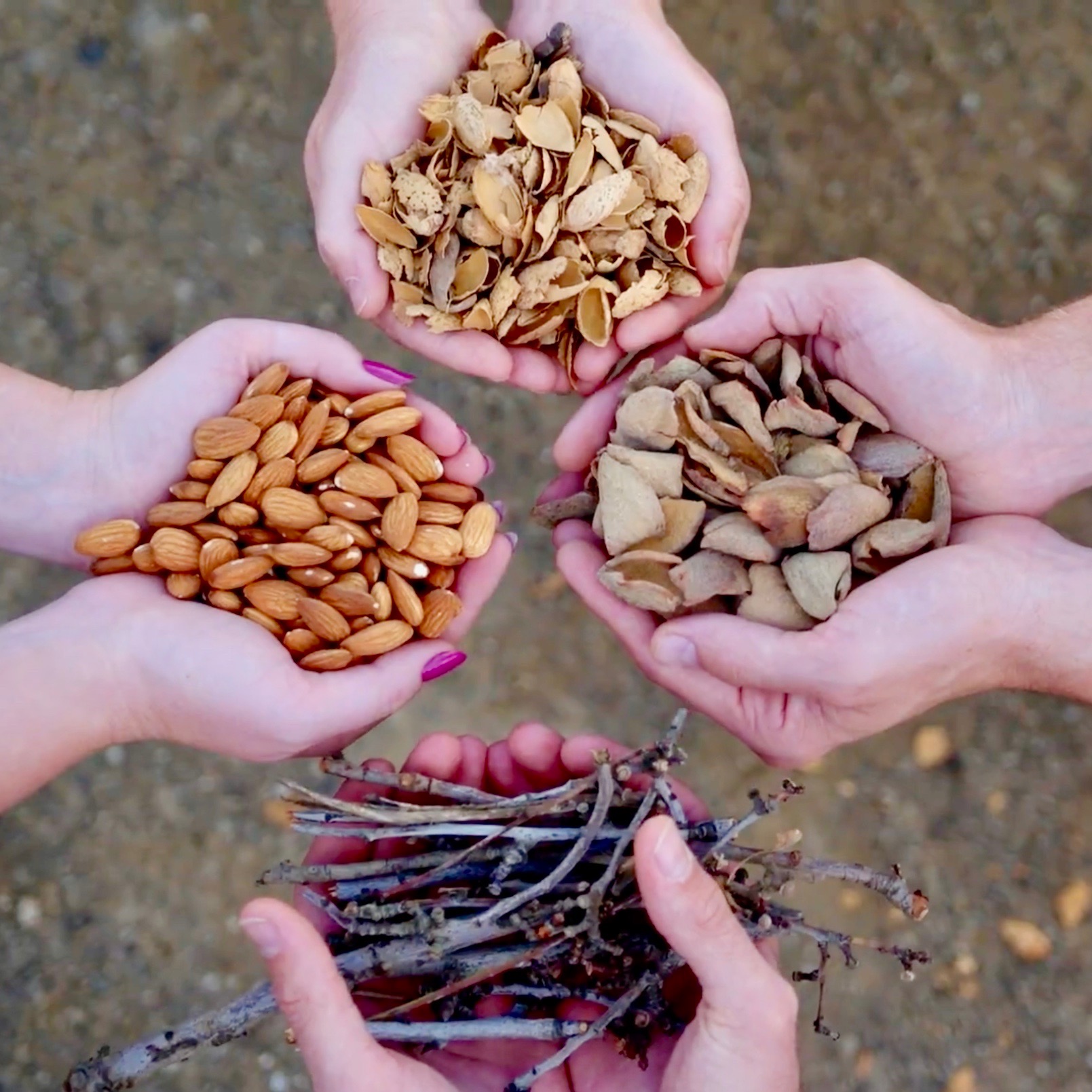Did you know almond trees grow four products? In addition to the kernel that we eat, almond coproducts include the almond hull, which is used to feed livestock, and the shells, which are used as livestock bedding. Even the trees are recycled at the end of their productive lives to create alternative energy or to improve soil quality.
Farmers have always taken responsibility for these coproducts, and now the California almond community is focusing research on additional and optimal uses for these coproducts, embracing a zero-waste approach that addresses critical needs across multiple industries.
Earlier this month, the Almond Board of California (ABC) announced a $6.8 million investment in 75 independent research projects exploring next-generation farming practices. Nearly twenty percent of that funding – $1.2 million – went to nine coproducts-focused research projects with applications spanning from in-orchard utilization to value-added uses.
“We enjoy working with the almond community because their goals align with ours. The Almond Board is investing in research so nothing goes to waste, with the goal of a neutral footprint,” said Lydia Palma, researcher and PhD student at University of California, Davis. “Our research partnership focuses on developing new technologies to convert almond coproducts into valuable products.”
Some of the research projects showing promising results are:
 Strengthening Recycled Plastics with Torrified Almond Shells
Strengthening Recycled Plastics with Torrified Almond Shells
USDA-ARS, Western Regional Research Center1
Almond shells have traditionally been used as livestock bedding. This research explores how almond shells, transformed to a charcoal-like powder through a process known as torrefaction, can serve as a strengthening agent and colorant for post-consumer recycled plastics.
 Cultivating Black Soldier Fly Larvae on Almond Hulls for Feedstock
Cultivating Black Soldier Fly Larvae on Almond Hulls for Feedstock
University of California, Davis2
Almonds’ sugary, fibrous hulls can feed animals big and small, including the emerging world of insect farming. This research project explores raising black soldier fly larvae, used as a feedstock for poultry and aquaculture, on almond hulls.
 Almond Hulls as a Growing Medium for Mushroom Cultivation
Almond Hulls as a Growing Medium for Mushroom Cultivation
USDA-ARS, Western Regional Research Center3
With their sugars removed for other uses – like the fermentation of beer, cider and tea – the remaining hull material can serve as an alternative to traditional peat moss for mushroom cultivation. This research project explores using almond hulls as a growing medium for commercial mushrooms, with preliminary results showing several benefits including optimal water absorption and increased yields.
“Creating new ways to use a product that has historically been thought of as a single-use item is very exciting,” said Mike Curry, almond huller/sheller with Johnson Farms. “The entire production and supply chain, including the consumer, will benefit from the development of new products from almond hulls and shells.”
ABC is proud to support the scientists exploring these innovative applications for almond coproducts that can help California in creating a genuine bioeconomy, where every byproduct is an input for another valuable product.
To learn more about how the almond community is embracing a zero waste approach, visit Almonds.com/ZeroWaste.
1Zach McCaffrey, et al. Recycled polypropylene-polyethylene torrefied almond shell biocomposites. Journal of Industrial Crops and Products. December 2018.
2Lydia Palma, et al. Cultivation of black soldier fly larvae on almond byproducts: impacts of aeration and moisture on larvae growth and composition. Journal of the Science of Food and Agriculture. December 2018.
3Allison Flynn, et al. Almond hull byproducts as a casing amendment material in mushroom (Agaricus bisporus) cultivation. Mushroom News. American Mushroom Institute. October 2018. https://bit.ly/2TTlM9V


